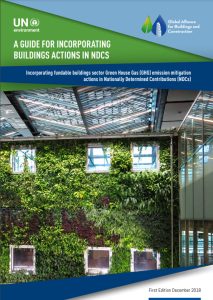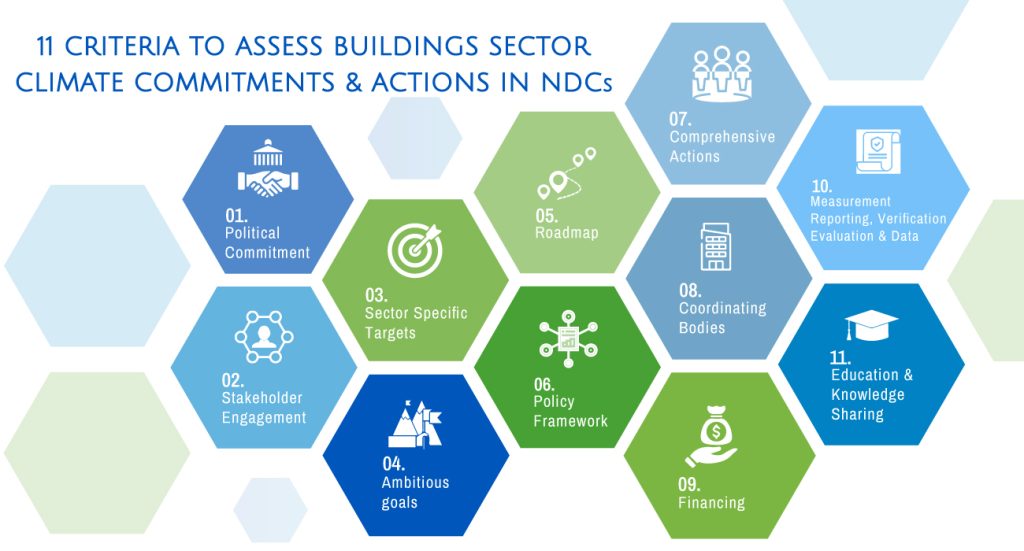Frontrunner building sector commitments to address “ambition gap”
Ambitious building sector climate actions are becoming critical to reach the Paris Agreement
The decarbonisation of the building sector has taken a negative turn since 2020, as per the data from the Global Buildings Climate Tracker. This has resulted in the widening of the gap between the current climate performance of the sector and the required decarbonisation pathway1.

Dr Peter Graham, CEO and Executive Director, GBPN
There is a lack of systemic improvement in the decarbonisation of the building sector according to Jonathan Duwyn, Programme Officer, Buildings and Construction, UNEP/GlobalABC Secretariat.
“By 2021, construction activities had rebounded to pre-pandemic levels, driving up energy demand and emissions in most major economies,” Mr Duwyn said.
“37% of carbon emissions came from the building and construction sector in 2021. We need to do way more to address the ambition gap between building sector climate actions in NDCs and being on track for the Paris Agreement.”
Dr Peter Graham, Executive Director, GBPN added, “158 countries have mentioned building sector in their NDCs as of November 20222. This is a milestone demonstrating that most countries in the world see the building sector as a real focus for climate action.
“Alongside these 158 NDCs, there are thousands of commitments from the private sector, universities, sub-national and local governments, which form the broader NDC commitment ecosystem. We have a strong sense of responsibility for decarbonising the building sector internationally and our challenge is to turn those commitments into accomplishments.”
Research defines criteria and develops tool to drive ambitious building sector decarbonisation actions
In 2018, GlobalABC, GBPN and Monash Art, Design and Architecture (MADA) worked on developing the NDC guide to address the urgent need for further extending the scope and ambition of building sector actions in NDCs.
“The NDC guide is structured around three stages for incorporating effective building sector GHG mitigation actions into NDCs – mapping, prioritising, and implementation and monitoring,” Mr Duwyn explained. Download the NDC GUIDE HERE
“But how do countries actually extend the scope of building sector actions? How can these actions be made practical and in a package that they can receive funding from different funding bodies to do that?”
To address these challenges, the UNEP-hosted Global Alliance for Buildings and Constructions (GlobalABC) through MADA and GBPN have developed a set of 11 criteria to assess building sector commitments in Nationally Determined Contributions (NDCs). The 11 frontrunner criteria are aimed at supporting countries to include building sector zero-emission actions in their NDCs and to ensure that these actions are in line with the benchmarks to halve emissions by 2030 and zero-emissions by 2050.
The frontrunner building action commitment was reached based on a modified Delphi study with thirteen global experts. The study reached the consensus for the definition of a frontrunner commitment as –
- Aims to achieve an emission reduction goal aligned with the Paris Agreement targets
- Links sub-national action with the national ambition including adaptation
- Expresses an implementation pathway or roadmap
- Is based on stakeholder engagement
The 11 criteria were presented at the COP27 in 2022 at an event hosted by GlobalABC at the Buildings Pavilion.
See the 11 criteria here.
A tool to support relevant and ambitious building sector commitments
A new policy is only as good as its implementation, according to Kate McFarlane, Head of Networks and Engagement, GBPN.
“Once there’s a new policy, we also need to ensure that it’s implemented and enforced properly. NDCs encourage different policy developments in countries,” Ms McFarlane said.
“We need to focus on strong implementation of NDC commitments which are focussed on the building sector. We need to simplify the implementation.”

To further simplify the benchmarking of NDCs, the 11 criteria was incorporated into a NDC tool, the Built Environment specific Commitment (BEC) tool, that countries can use to benchmark the actions they propose to take. The tool is currently in the prototype stage.
The tool makes it easier for countries to identify clearly how their commitments stand against front-runner commitments according to Craig Burton, Head of Knowledge Innovation, GBPN.
“The tool is developed with a user-friendly interface. We interacted with representatives of four countries for the prototype to understand the challenges in decarbonising their building sector and also the opportunities,” Mr Burton said.
“We used this information to design the user interface for future users. The tool helps to compare the Business As Usual scenario and the cost associated with it, to the existing building sector commitment costs and the cost of getting to zero emissions.”
The 11 criteria and the tool are expected to help countries identify clearly how their commitments stand against front-runner commitments and create more ambitious actions for decarbonizing the building sector.
See the prototype NDC tool here.
Next steps – Getting the frontrunner criteria and tool ready for the broader commitment ecosystem
During the Delphi study, the expert panel recommended developing an assessment rubric for each of the criteria.

“At the moment, we can name what the criteria is. But when we look at a NDC, it’s not easy to assess it based on the definition,” Ms McFarlane said.
“Once the methodology is locked in, the NDC tool also needs to be finalised and ready for countries to use.”
Mr Duwyn added that the tool was a strong platform to popularise the frontrunner criteria. “Once the tool is in its final version, it will function as a live NDC database that is continuously updated and mapped.”
GBPN is also in the process of partnering with Monash University to focus on strengthening the evidence base around the criteria, looking at the trends and gaps in NDCs and developing a methodology for assessing frontrunner criteria.
“With the 11 criteria, we are trying to make it a lot easier for countries, for potential investors or donors, for NGOs who are offering support for implementation of building sector actions to actually find the commitments that countries are making; and also to understand whether the commitments are ambitious and on-track for the Paris Agreement. That is the basis of the work we are doing with UNEP and GlobalABC, and Monash University,” Dr Graham said.
“We are fully focussed on the next steps to make it available for all countries to adopt and adapt. We encourage countries to use this framework to set more ambitious targets.
“We must halve building sector emissions by 2030. This isn’t an option, it’s an imperative.”
- 2022 GSR for Buildings and Construction – GlobalABC
- 2022 GSR for Buildings and Construction – GlobalABC







